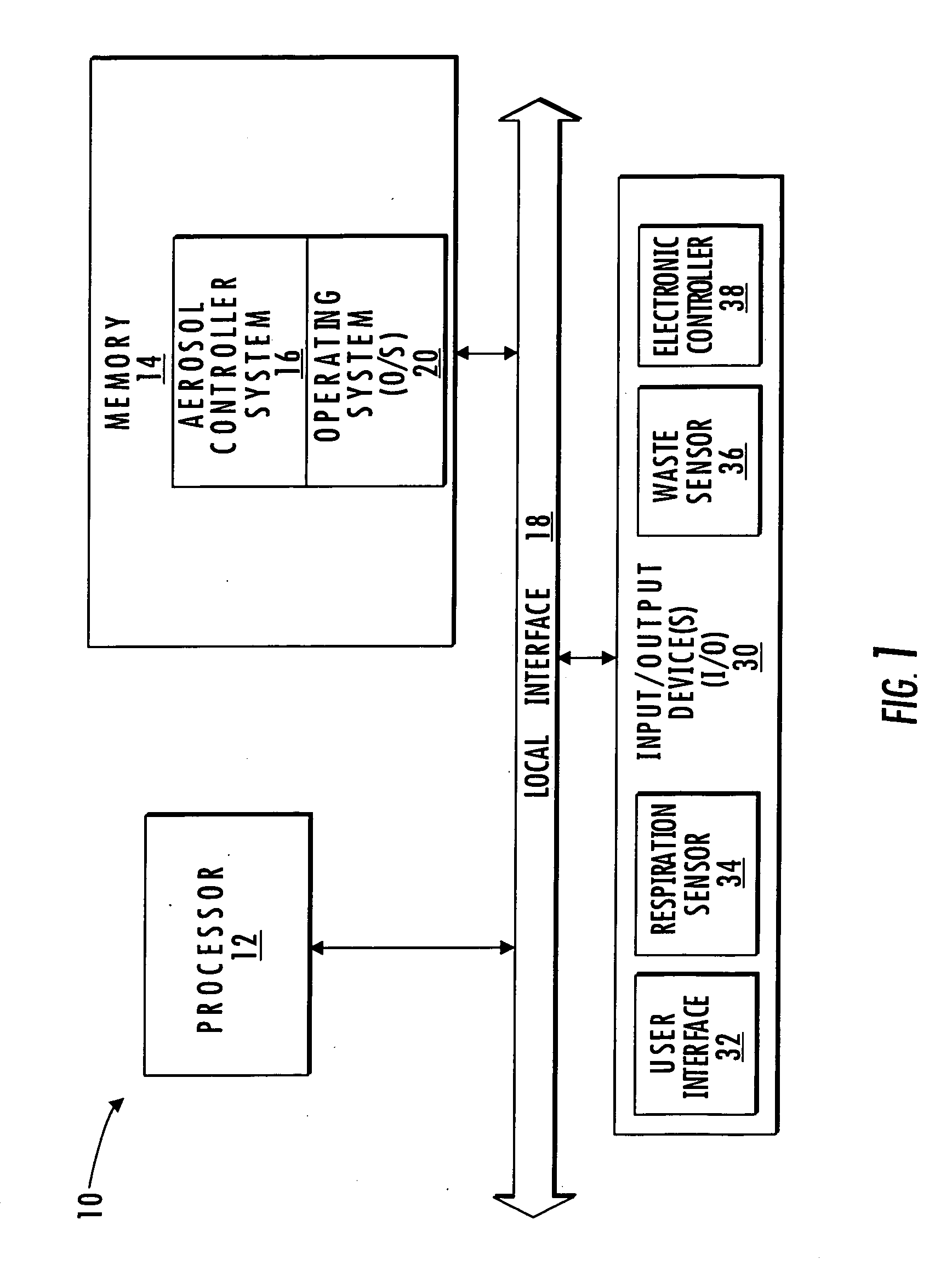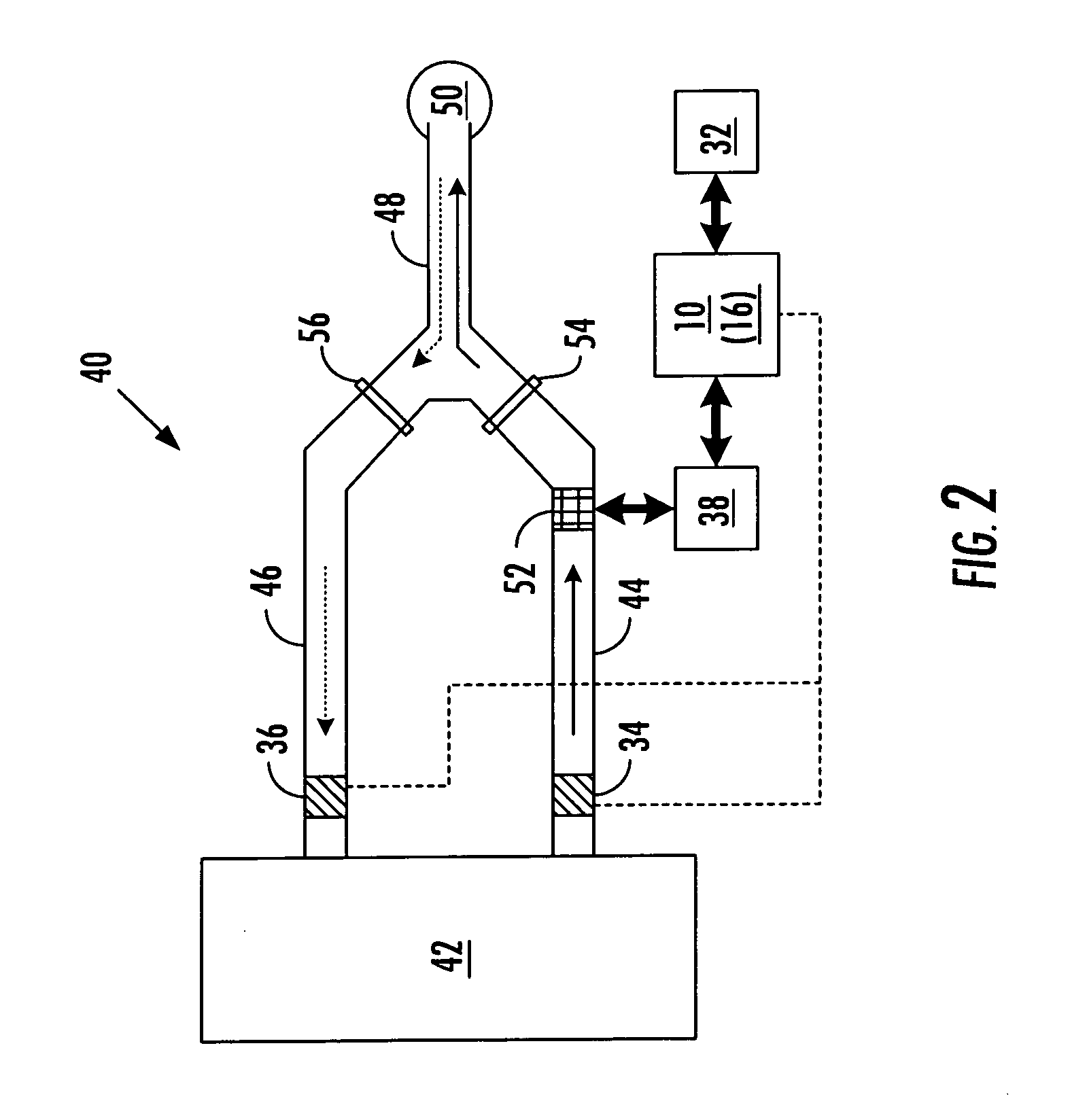System and method for optimized delivery of an aerosol to the respiratory tract
an aerosol and respiratory tract technology, applied in the direction of valves, mechanical devices, operating means/releasing devices, etc., can solve the problems of inefficiency and variability inherent in human performance, inability to adapt to mechanical ventilator patients, and devices that combine nebulizer technology with strategies that allow aerosol generation during inspiration only have not, to date, proven readily adaptable for use in mechanical ventilator patients
- Summary
- Abstract
- Description
- Claims
- Application Information
AI Technical Summary
Benefits of technology
Problems solved by technology
Method used
Image
Examples
example 1
[0137] Controlled Aerosol Delivery in a Ventilator Circuit Reduces Waste and Enhances Deposition In Vitro.
[0138] The In vitro Testing Apparatus: The following in vitro studies were designed to assess the effects of nebulization timing and duration on the efficiency of radioisotope aerosol deposition and the magnitude of the wasted fraction in a ventilator circuit. As illustrated in FIG. 9, corrugated tubing was connected to the inflow and outflow ports of an Ohmeda anesthesia ventilator machine, and oxygen-enriched air was passed through the system at a tidal volume of 500 ml (˜7 ml / kg based on a 70 kg human). Differential pressure sensors (World Magnetics, Traverse City, Mich.) were combined with an airflow resistance coupler and placed in the inspiratory and expiratory limbs of the ventilator circuit. Signals from each sensor were sent with each ventilator cycle to an electronic controller / data acquisition system (computer with DAQCard 1200 PCMCIA card and a Labview software inte...
example 2
Compare Performance of the Device of the Present Disclosure with Conventional Continuous Aerosol Delivery in Mechanically Ventilated Healthy Sheep and Sheep with Acute Lung Injury.
[0147] In anesthetized sheep with either normal lung mechanics or during bronchoconstriction, the effects of phasic aerosol delivery on the amount of radioisotope deposited in the lungs and the amount expired (as collected in a waste filter) were tested. Results were compared to those in which aerosol was delivered continuously. Sheep were anesthetized and ventilated with oxygen-enriched air at a tidal volume of 500 ml and a respiratory rate of 10 breaths per minute. The ventilator setup is illustrated schematically in FIG. 15.
[0148] A lead-shielded gamma scintillation probe (Bicron 2M / 2, Saint Gobain Crystals and Detectors, Newbury, Ohio) was placed on the chest wall, and gamma emissions from a subjacent portion of lung monitored through an isotope detection system that included a multichannel analyzer...
example 3
Radioaerosol Waste is Enhanced Following Endotoxin-Induced Acute Lung Injury
[0153] This study was designed to compare the wasted fraction of 99mTc-DTPA aerosols delivered continuously with the zero flow nebulizer to control sheep (n=6) and sheep administered 2 mg / kg E. coli endotoxin. This dose of endotoxin in sheep causes a period of intense bronchoconstriction and pulmonary vasoconstriction followed by pulmonary edema. The experimental setup was similar to that illustrated in FIG. 15, except that no scintillation probe was used and isotope waste was measured by counting radioactivity in a filter placed in the expiratory portion of the ventilator tubing using a gamma energy counter. The wasted fraction of aerosol was more than 3-fold higher during endotoxin-induced lung injury with endotoxin [3,836,141 (n=1)] than when the lungs were normal [1,289,102±125,326 (n=6)]. These results and those of Example 2, above, suggest that the use of the device of the present disclosure and posi...
PUM
 Login to View More
Login to View More Abstract
Description
Claims
Application Information
 Login to View More
Login to View More - R&D
- Intellectual Property
- Life Sciences
- Materials
- Tech Scout
- Unparalleled Data Quality
- Higher Quality Content
- 60% Fewer Hallucinations
Browse by: Latest US Patents, China's latest patents, Technical Efficacy Thesaurus, Application Domain, Technology Topic, Popular Technical Reports.
© 2025 PatSnap. All rights reserved.Legal|Privacy policy|Modern Slavery Act Transparency Statement|Sitemap|About US| Contact US: help@patsnap.com



